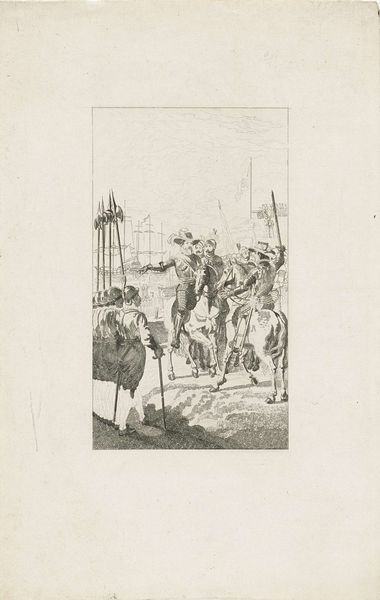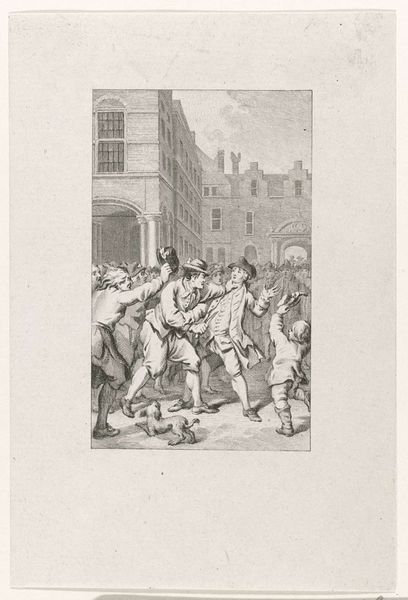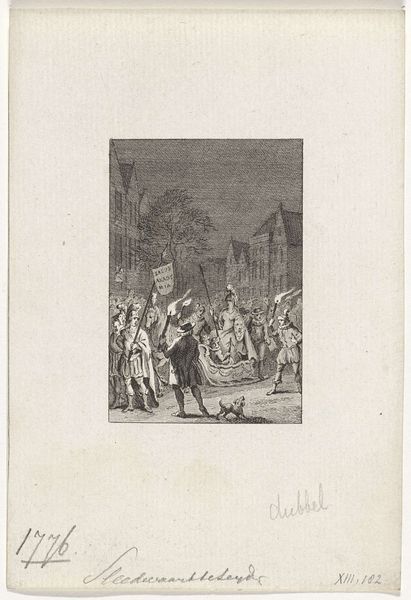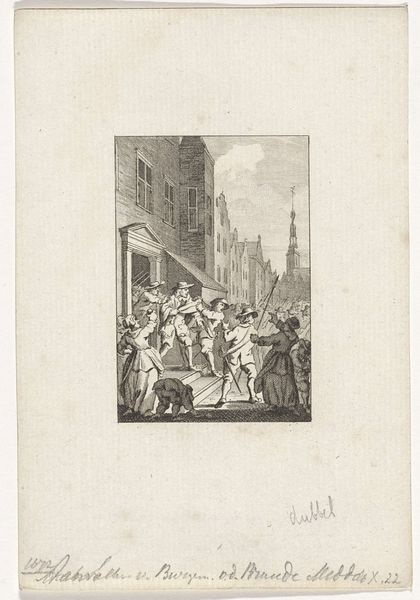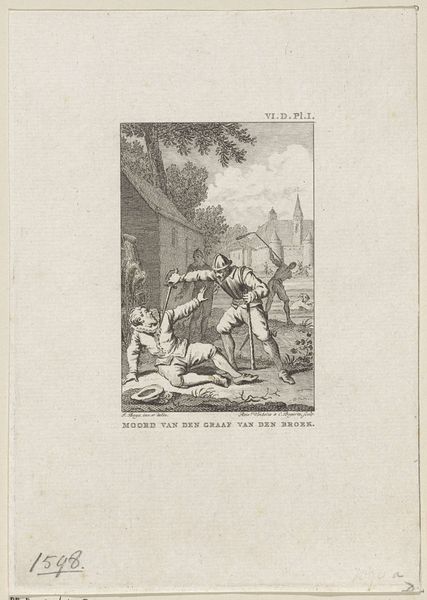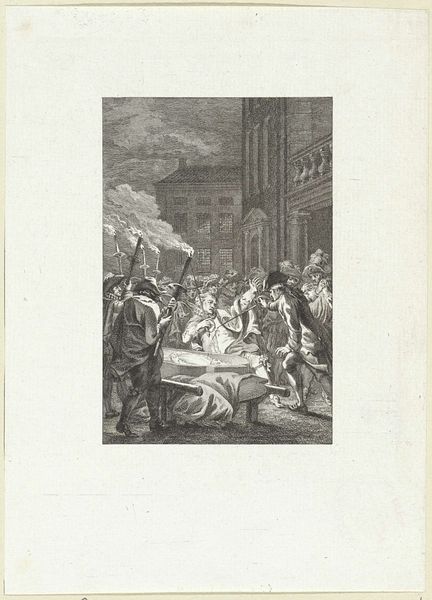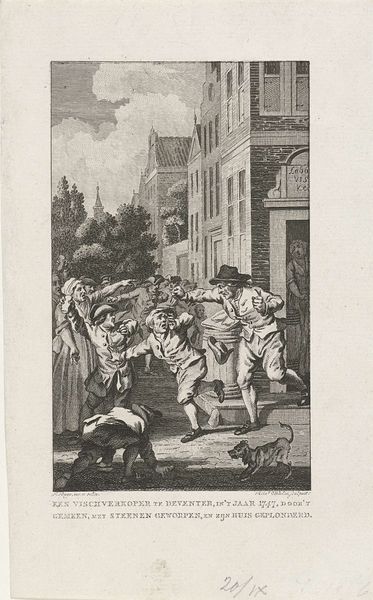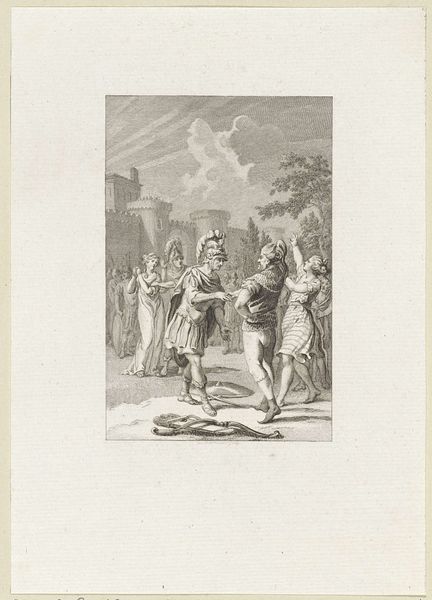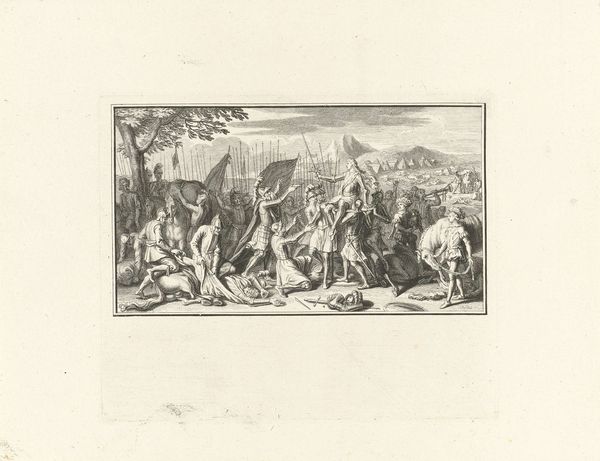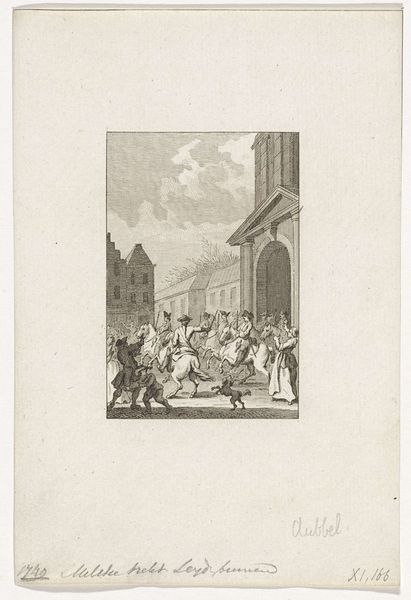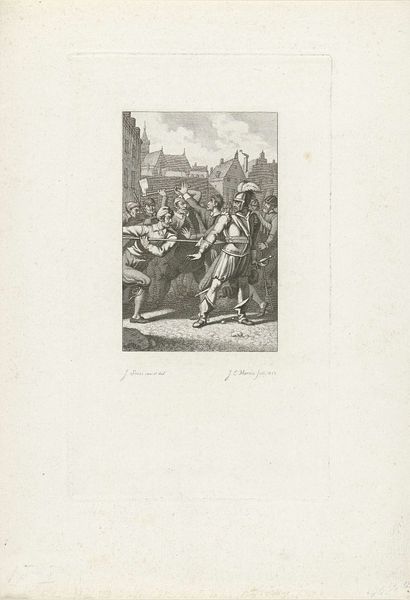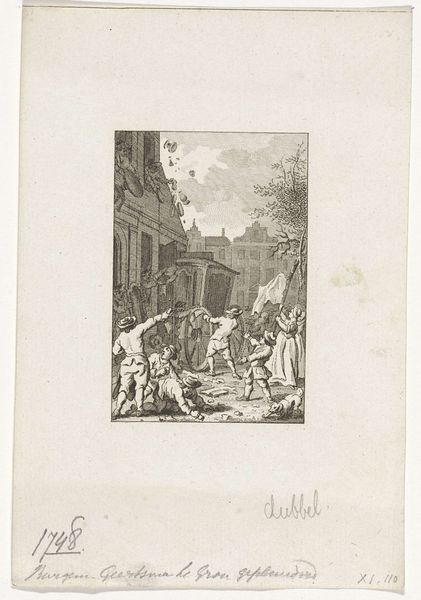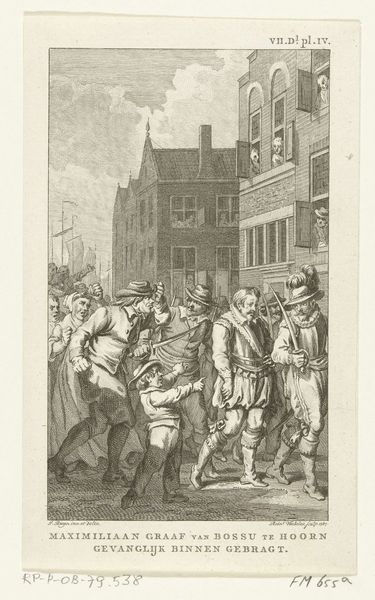
Dimensions: height 234 mm, width 150 mm
Copyright: Rijks Museum: Open Domain
Curator: What a wonderfully energetic scene! It practically leaps off the paper. Editor: It does have a dynamism to it. This engraving, made around 1785 by Reinier Vinkeles, is titled "Opstand van het Kaas- en Broodvolk te Alkmaar, 1492," or "Revolt of the Cheese and Bread People in Alkmaar, 1492." Part of the collection at the Rijksmuseum, this print speaks to a fascinating moment in Dutch history and visual culture. Curator: Cheese and bread? That sounds like my kind of revolution! Though looking at it, there’s a surprising amount of implied violence. It’s like a playground scuffle but with much higher stakes—the hats flying off, the aggressive postures. Editor: Absolutely. And note that it's an engraving, a printmaking technique involving cutting lines into a metal plate, in this instance likely copper, with a tool called a burin. These lines hold the ink, which is then transferred to paper. The meticulous labor invested speaks to the widespread interest in depicting civic unrest during the late 18th century, at a time of massive social upheaval. The proliferation of prints allowed these political and historical moments to become widely accessible and debated, engaging ordinary people in shaping and imagining a shared past. Curator: It's fascinating how such a precise and seemingly clinical method creates such a chaotic and spirited impression! There’s this sense of almost absurd, clumsy rebellion, perfectly captured in these scratchy, energetic lines. Makes you wonder what was really going through the artist's mind when they rendered this scene. I see rage, but also a certain irony, like he's both celebrating and critiquing the rebellion all at once. Editor: I think the print functions almost like propaganda; while commemorating the past it subtly engages in contemporary discussions regarding power, identity, and the "right to revolt." Curator: Right, and these layered implications transform the artwork beyond a mere historical document. Editor: Indeed. When considered through this perspective, it transcends representation, inviting inquiry into craftsmanship, dissemination of concepts, and socio-political dialogues of both eras.
Comments
No comments
Be the first to comment and join the conversation on the ultimate creative platform.
